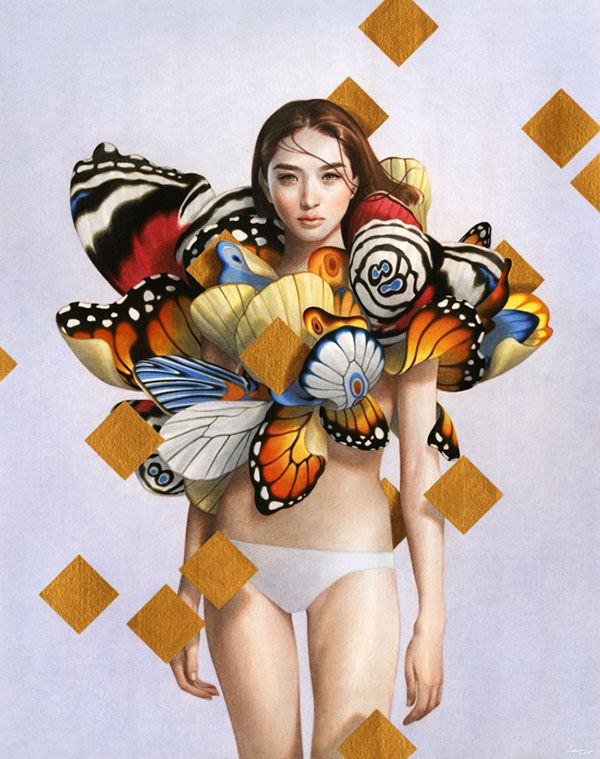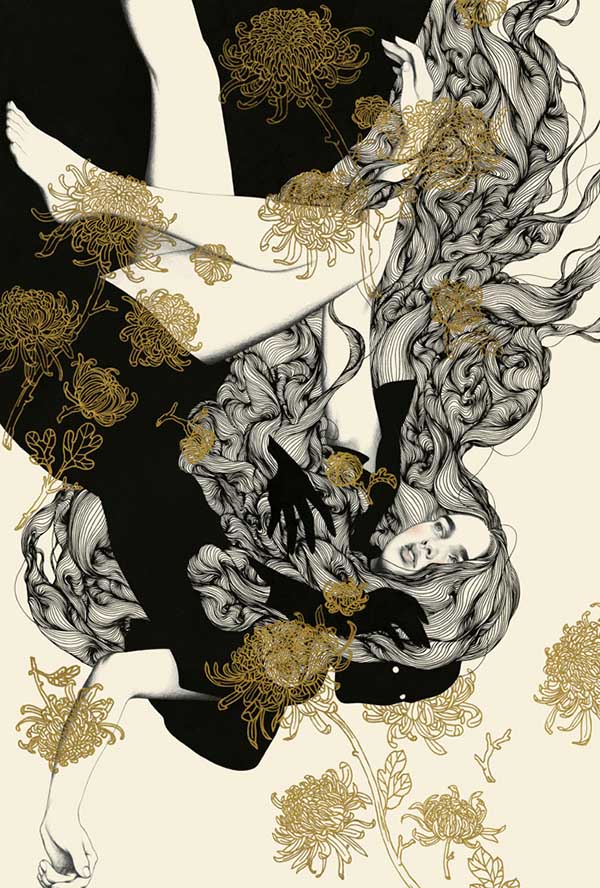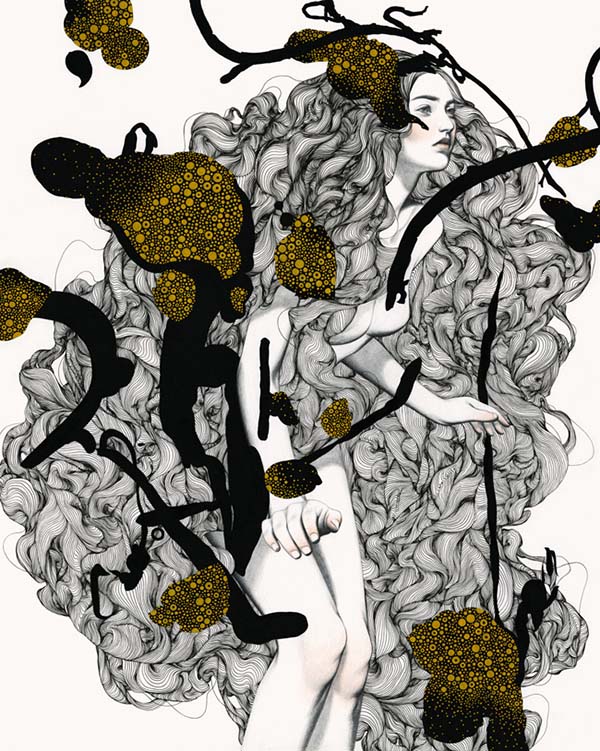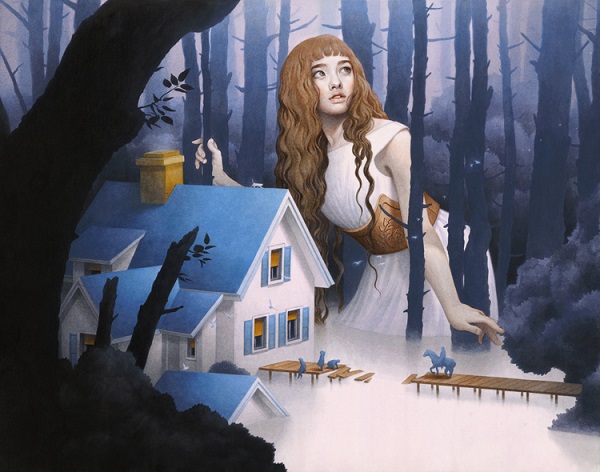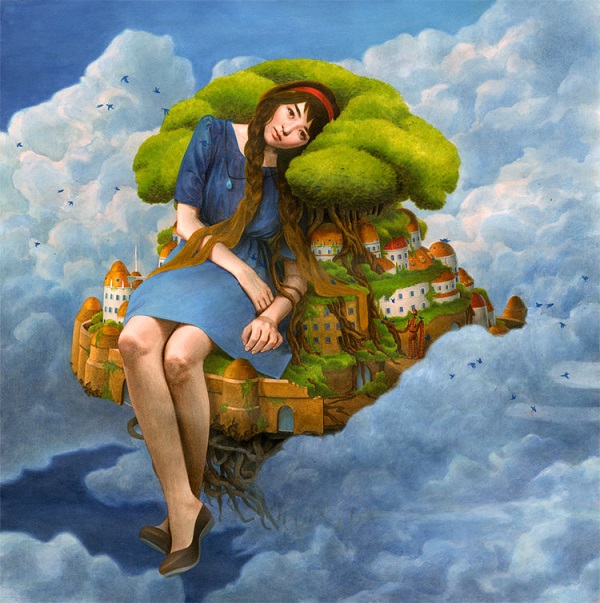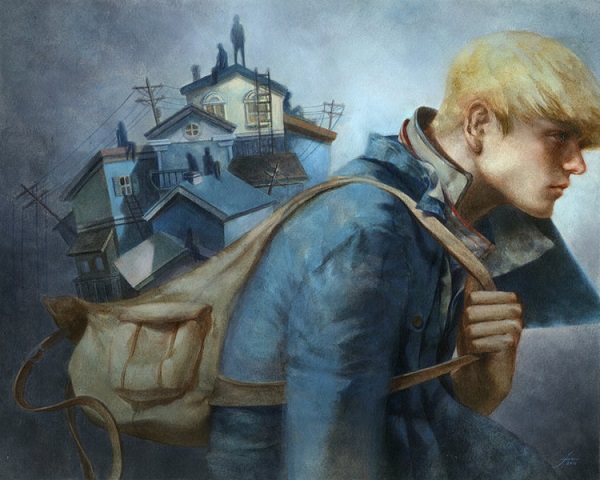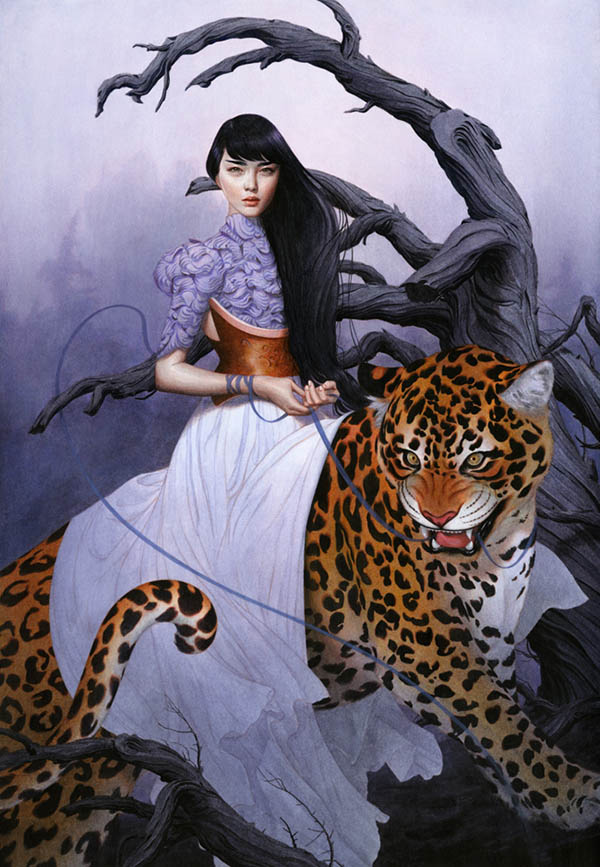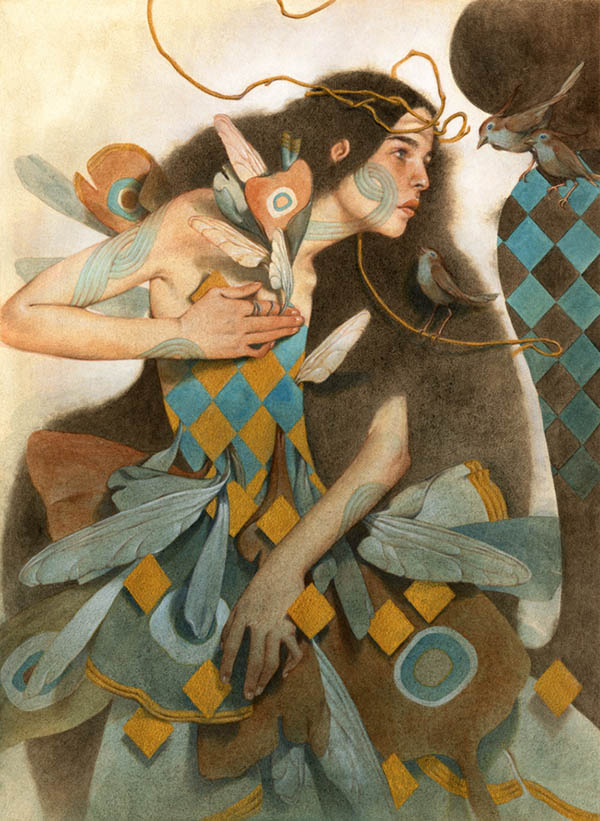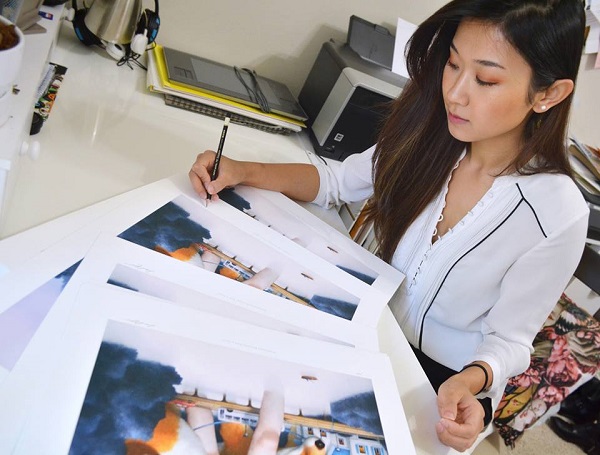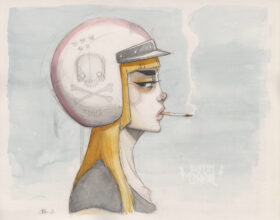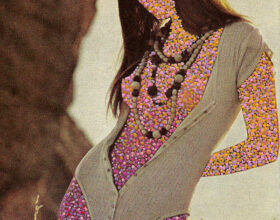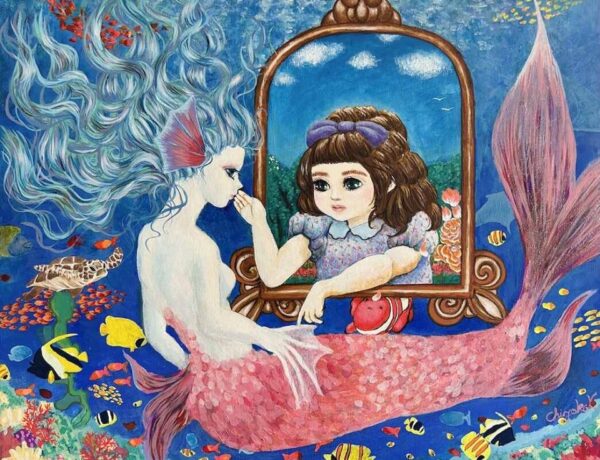With incredible surrealist imagery, larger-than-life characters in dreamlike landscapes tell the story of the unconscious mind. The work of Tran Nguyen is transformative, using illustration as a vehicle for psychotherapeutic healing, and the exploration of subconscious emotion. At times, it feels like she’s harnessing all the best parts of dreams and nightmares, and is giving us glimpses of emotional lessons lost in the world between sleep and waking.
“It’s interesting how your subconscious is always miles ahead of you.”
With sincere and impeccable intent, Tran creates these illustrations for herself, and for others. “Art exists to better us in some form or shape,” she explains, “and it’s my hope that viewers can find comfort in my work.” And that is exactly why it was such an absolute honor to interview this incredible artist.
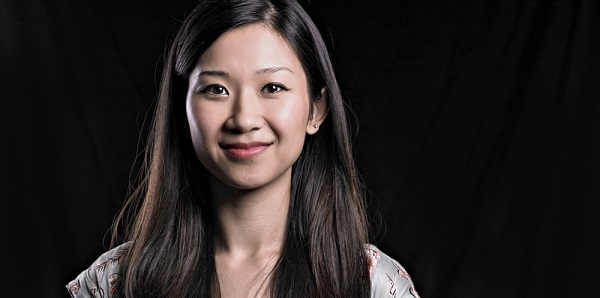 Tran Nguyen | Photo by Greg Preston
Tran Nguyen | Photo by Greg Preston
Website | Facebook | Instagram | Tumblr
.
.Tran, how did your career as an artist get started? How old were you when you came from Vietnam?
I came to the States when I was about three years old. My family and I were very fortunate to have the opportunity to escape the poverty in Vietnam, and migrate to a country with a higher quality of life. I started my professional career by taking a detour into fine art after graduation, showcasing with Thinkspace gallery in Los Angeles.
Have you always had natural artistic ability? Can you speak a little on your personal journey — from childhood, to where you are as an artist now?
I grew up with a lot of brothers, and being the only girl, I did everything they did. Because of that, I was introduced to Anime and the art of video games at an early age. Things like Final Fantasy, Evangelion, and Escaflowne were what inspired me to draw all the time. I copied everything that I saw on TV. On many occasions, I would play my Bubblegum Crisis VHS and pause it during one of Nene’s battle scenes so I could transcribe the still onto my sketchbook. I think the fact that I drew all the time was what contributed to my natural artistic ability. Receiving my formal studies from college was what helped me honed my raw skills, which ultimately led me to stray away from my early influences.
What was your academic experience like, and what motivated you to study illustration? How much has formal education influenced your career?
I have a bit of a biased outlook on art college, in that I felt very lucky to be able to attend SCAD. I mean, very lucky. I don’t come from a well-off family so going to a school that costs $29,000 a year was never a possibility for me. I was only able to attend because of generous grants and scholarships that were offered at the time. My parents didn’t have the opportunity to attend college or even pursue their dreams so knowing this has shaped my mentality, and made me a better, stronger person whenever an ordeal comes knocking. Learning the basics of anatomy, form, and color, in college was what evolved my Anime influenced style into what it is now. It has a more photorealistic approach these days, but there are slivers of my early influences hidden in some parts.
Can you talk a little bit about the evolution or progression of your projects both in concept and in technique?
Conception is the first and usually the hardest step for me. It consists of squiggly lines and the jotting down of descriptive words. The squiggly lines are then slowly turned into rough sketches to solidify my composition and value. Afterwards, the lines are tightened and the details are refined. Using my Epson 11000XL scanner, the sketch is digitized, cleaned up, and printed directly onto hot press watercolor paper. At the start of the painting phase, I apply flat washes of acrylic paint. Using the technique of glazing, I create form and build value by overlaying numerous layers on top of each other. To push the values and smooth out some of the paint strokes, I add colored pencils on top of the acrylics. Towards the end, the colored pencils are used to noodle in the fine details. That’s it in a nutshell!
I see you’ve worked for a diverse clientele – you have an impressive portfolio. From Smithsonian Magazine, VH1, and O. Oprah Magazine – to even Playboy; there is no shortage of notoriety. How does the type of work you do vary?
I mainly work in two industries, commercial illustration and fine art. The clients you mentioned are my commercial clients where I collaborate with an art director to effectively convey a narrative. For my gallery work, it’s about capturing a human experience, a tone. It’s very esoteric and abstract while my commercial work is based on design and concept.
Do you get the same satisfaction from commercial projects as you do from work that is geared more toward fine art?
It’s hard to say – like comparing apples and oranges. They both achieve fulfillment and satisfaction in their own way. With corporate projects, I can build wonderful rapport with the art director or design team. It’s also rewarding to see my work as a final product, whether in a bookstore or on a wine bottle. With gallery/personal art, I can depict my artistic voice in a more raw manner. It’s extremely therapeutic and helps me cope with my adversities.
Your work feels both surreal and real, abstract and concrete. What is it that inspires you to depict this convergence?
I enjoy dichotomies and juxtapositions that blur into one another. There’s an odd sense of satisfaction that I gain from it.
I’ve noticed, in some of your pieces, both abstract and realistic elements seem to interact with one another. Is there a specific motivation for the fascinating blend of detailed and bold styles/techniques?
I like to have realistically rendered figures intermingle with flat, geometric shapes. Honestly, I don’t exactly know why I gravitate towards this imagery. It may have something to do with achieving balance, but that’s just a theory among the many theories I have in figuring out why I illustrate what I illustrate. A lot of my concepts derive from my subconscious. Aside from being aesthetically pleasing, I generally have a hard time pinpointing my reasons for being compelled by certain motifs and concepts.
I’ve read that you are very much inspired by therapeutic imagery. Have your own struggles and life experiences informed or changed your style — for specific pieces, and style overall?
Adversity and life experiences have very little influence on my style. However, they’re the steering wheel for the concepts behind my personal work. The series with the abstract cocoons, larger-than-life figures, etc., all exist because of the things I’ve seen and experienced.
Can you give an example of a piece you’ve created as a “psycho-therapeutic support vehicle”? If there was one life experience or corner of your mind you’d like to represent, which piece or series would you use to describe it and why?
My paintings tend to portray certain instances from life in a very abstract way. They’re not special by any means, just a moment of human experience. Art exists to better us in some form or shape, and it’s my hope that viewers can find comfort in my work. I’ve come to the realization that my series with the “larger-than-life figures and their desolate suburbia” is my way of coping with the loss of my little brother. Everyone’s lost someone, and I hope that people who share this pain can find at least a millimeter of peace from its imagery. I started the series seven years ago, and it’s only in the past year that I’ve been struck by this epiphany. It’s interesting how your subconscious is always miles ahead of you.
What’s next for you, Tran? Can you tell us a bit about your upcoming artbook? We’re all certainly looking forward to whatever you have in store for us!
I’m currently working on an exciting project that’s been one of the most fulfilling assignments I’ve ever been a part of. Art is meant to influence the world in a positive way and this project has immensely allowed my work to transcend itself. Things are wrapping up so I’m hoping to share it with everyone in the coming month. As for the art book, I want it to be the best it can be so I’m shooting for a release date in 2018!
https://www.youtube.com/watch?v=njdjk1f55IE


